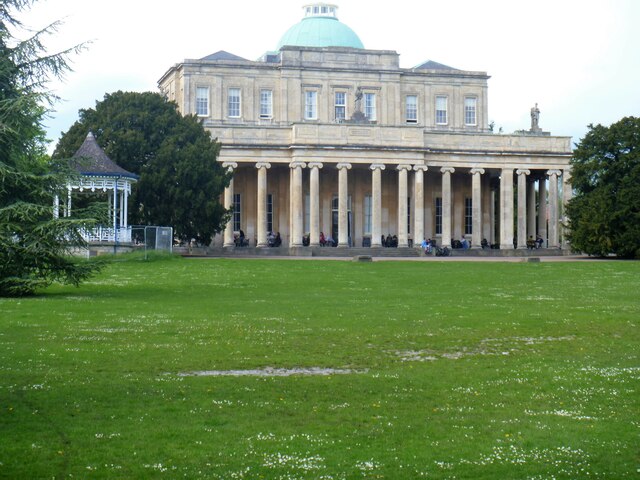Cheltenham buildings [119]
Introduction
The photograph on this page of Cheltenham buildings [119] by Michael Dibb as part of the Geograph project.
The Geograph project started in 2005 with the aim of publishing, organising and preserving representative images for every square kilometre of Great Britain, Ireland and the Isle of Man.
There are currently over 7.5m images from over 14,400 individuals and you can help contribute to the project by visiting https://www.geograph.org.uk

Image: © Michael Dibb Taken: 19 May 2021
Pittville Pump Room is considered one of the finest buildings in Cheltenham. Built in 1830 with later alterations and restorations in the 1950s. In the Greek Revival style with details based on engravings of the Temple of Illissus in Athens. Constructed of ashlar over brick with a slate roof and a copper dome. Above the colonnade are three statues, the goddess Hygieia, Aesculapius and Hippocrates. Listed, grade I, with details at: https://historicengland.org.uk/listing/the-list/list-entry/1387559 The Pump Room, roads and gardens of the Pittville Estate were purchased by Cheltenham Borough Council in 1891 and opened as a public park. The park is on the Register of Historic Parks and Gardens, grade II, with details at: https://historicengland.org.uk/listing/the-list/list-entry/1000196 Cheltenham is located at the foot of the Cotswold scarp with the small River Chelt flowing through the town. After the discovery of mineral springs in 1716 Cheltenham became a spa town and many Regency houses and other buildings were erected. The town is home to the renowned Cheltenham Festival, four days of horse jump racing culminating in the Gold Cup, held annually in March at the nearby racecourse.

